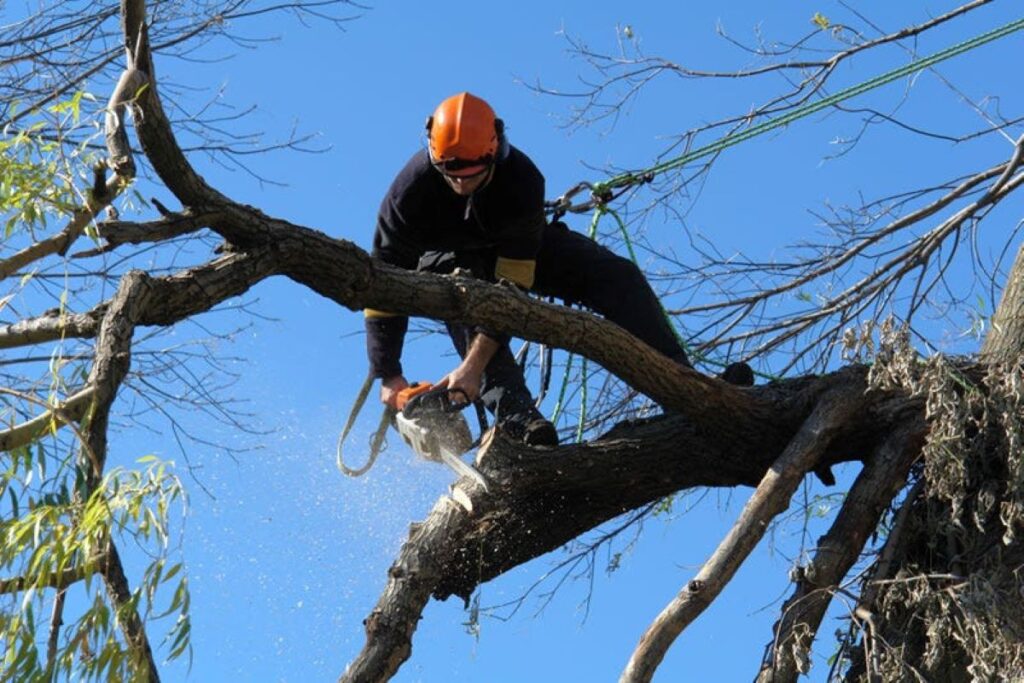Pruning is an essential part of tree care, promoting healthy growth and maintaining the aesthetic appeal of your landscape. However, improper pruning techniques can lead to severe consequences, including structural damage, increased susceptibility to disease, and even the premature death of your trees. Understanding the common mistakes made during tree pruning can help you avoid these pitfalls and ensure your trees thrive for years to come. Below are five critical mistakes to watch out for when pruning your trees.
1. Over-Pruning: Less is More
One of the most prevalent mistakes in tree pruning is over-pruning, which occurs when more than 20-30% of a tree’s foliage is removed in a single year. This practice can severely affect the tree’s health, structural integrity, and aesthetic value. Trees rely on their leaves to photosynthesise and produce energy; removing too much foliage can hinder this process, leading to stress and vulnerability.
Moreover, excessive pruning can result in a tree becoming unbalanced, making it more susceptible to wind damage and other environmental stresses. The Tree Care Industry Association (TCIA) emphasises that maintaining a healthy canopy is crucial for the overall well-being of the tree. Therefore, when planning your pruning strategy, always aim to remove only what is necessary to promote healthy growth.
To avoid over-pruning, assess the tree’s condition and growth pattern before making any cuts. Focus on removing dead or diseased branches and thinning out crowded areas to improve air circulation and light penetration without compromising the tree’s overall structure.
2. Topping: A Recipe for Disaster
Topping is a drastic pruning method that involves cutting off major portions of a tree’s crown without regard for its natural structure. This practice can lead to significant structural problems and unnatural growth patterns, ultimately reducing the tree’s lifespan. Alden Kelley, a consulting arborist, warns that topping can create weak branches that are more likely to break under stress.
Additionally, topping can result in the tree producing numerous water sprouts—vigorous, upright shoots that emerge from the cut areas. These sprouts are often weakly attached and can pose a hazard as they grow. Instead of topping, consider selective pruning techniques that maintain the tree’s natural shape while removing only the necessary branches.
When pruning, always aim to enhance the tree’s natural form. If height reduction is necessary, consider methods such as crown reduction or thinning, which preserve the tree’s integrity while achieving the desired results.
3. Pruning at the Wrong Time
Timing is crucial when it comes to tree pruning. Pruning during active growth seasons, particularly in spring or summer, can attract insects and increase the risk of tree diseases. Research indicates that wounds inflicted during these periods take longer to heal, leaving the tree vulnerable to pathogens.
To optimise tree health, it is advisable to prune during the dormant season, typically late autumn or winter. During this time, trees are less active, and the risk of disease transmission is significantly reduced. Additionally, pruning during dormancy allows for better visibility of the tree’s structure, making it easier to identify which branches require removal.
However, it is essential to consider the specific species of tree you are working with, as some trees may have unique pruning requirements. Always research the optimal pruning times for the specific species in your garden to ensure the best results.
4. Making Flush Cuts
Flush cuts occur when a branch is cut too close to the trunk, removing the branch collar—the area of tissue that helps the tree seal the wound. This practice is highly detrimental to tree health, as it can lead to decay and significantly shorten the tree’s lifespan. The Agroforestry Research Trust advises against making flush cuts, emphasising the importance of preserving the branch collar during pruning.
When pruning, aim to make cuts just outside the branch collar, allowing the tree to seal the wound effectively. This technique not only promotes healing but also reduces the risk of decay and disease. Proper cutting techniques are vital for maintaining the health and longevity of your trees.
In addition to avoiding flush cuts, be mindful of the size of your pruning cuts. Research suggests that for trees that seal poorly, such as maples and birches, cuts should be no larger than 2 inches in diameter. This practice facilitates better sealing and reduces the risk of infection. You may like to visit https://fatangelsf.com/stump-grinding-cost-6-factors-that-change-the-final-price/ some factors that affect stump grinding cost.
5. Using Wound Dressings
Many tree owners believe that applying wound dressings to pruning cuts can help protect the tree from decay and disease. However, research indicates that wound dressings do not prevent wood decay and may even promote decay in certain situations. The application of these products can create a moist environment that fosters fungal growth, ultimately harming the tree.
Instead of using wound dressings, focus on proper pruning techniques that minimise the size of cuts and promote natural healing. Allowing the tree to seal its wounds naturally is often the best course of action. This approach not only supports the tree’s health but also aligns with best practices recommended by arborists and tree care experts.
In conclusion, understanding the common mistakes associated with tree pruning is essential for maintaining the health and longevity of your trees. By avoiding over-pruning, topping, improper timing, flush cuts, and the use of wound dressings, you can ensure that your trees remain healthy and vibrant for years to come. Always remember that when in doubt, consulting with a professional arborist can provide valuable insights and guidance tailored to your specific tree care needs.

Final Thoughts
Tree pruning is a delicate art that requires knowledge, patience, and respect for the tree’s natural growth patterns. By educating yourself about the common mistakes and implementing best practices, you can cultivate a thriving landscape that enhances the beauty and health of your trees. Whether you are a seasoned gardener or a novice, taking the time to understand the intricacies of tree pruning will pay dividends in the long run.

